|
The German military leaders
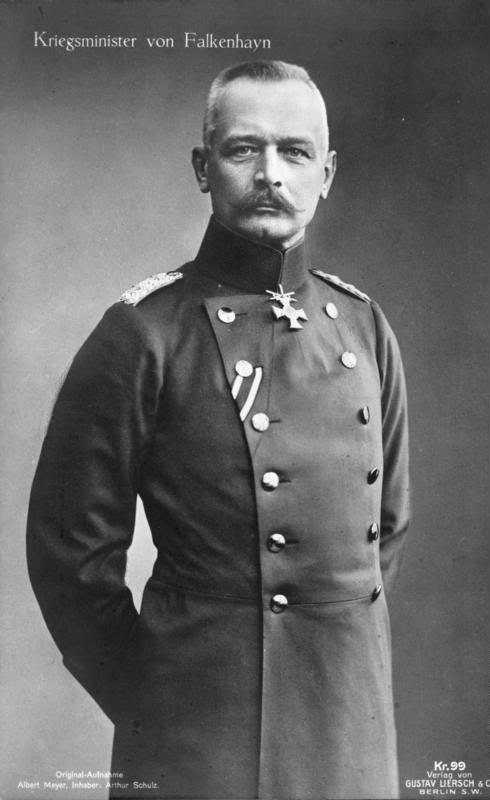 | Erich von Falkenhayn
(born 11 September 1861 in Burg Belchau near Graudenz; died 8 April 1922 in Potsdam near Berlin) was a German soldier and Chief of the General Staff during World War I. He became a military writer after World War I. |
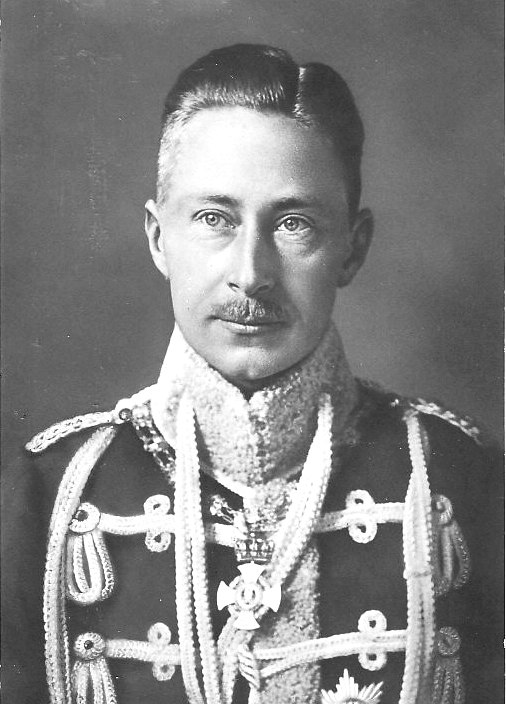 | Wilhelm, German Crown Prince (Friedrich Wilhelm Victor August Ernst)
(Born on 6 May 1882, Mamorpalast, Potsdam near Berlin and died on 20 July 1951 in Hechingen) was the eldest child of the soon-to-be German Emperor Wilhelm II and his wife Empress Augusta Victoria, and the last Crown Prince of the German Empire and the Kingdom of Prussia. After the death of his grandfather Emperor Frederick III, Wilhelm became crown prince at the age of six, retaining that title for more than 30 years until the fall of the empire on 5 November 1918. During World War I, he commanded the 5th Army from 1914 to 1916 and was commander of Army Group German Crown Prince for the remainder of the war. Crown Prince Wilhelm became Head of the House of Hohenzollern on 4 June 1941 following the death of his father and held the position until his own death on 20 July 1951. |
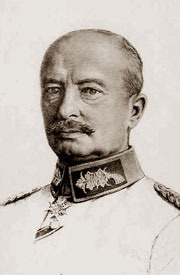 | Konstantin Schmidt von Knobelsdorf
(Born on 13 December 1860, Frankfurt/Oder and died on 1 September 1936 in Glücksburg) was a Prussian military officer, and a general in the First World War.
He joined the German army at the age of 18. By 1912 he was Major general and Oberquartiermeister of the German General Staff. In 1914 he was promoted to Lieutenant general.
At the outbreak of World War I, he became Chief of Staff of the 5th German Army, which was formally led by Crown Prince Wilhelm of Germany. But the Crown Prince was only thirty-two years old and had never commanded a unit larger than a regiment, and was therefore ordered by his father the Emperor to always follow the advice of his experienced Chief of Staff.
Schmidt von Knobelsdorf was one of the main architects of the plans to launch a major attack against the French at Verdun in February 1916. As de facto leader of the 5th Army, it was also Schmidt von Knobelsdorf who directed the attack and who pushed for victory at all costs. This led to several conflicts with the Crown Prince. When the attacks didn't deliver the expected results, Schmidt von Knobelsdorf was awarded the Pour le Mérite with Oak Leaves on 21 August 1916, and moved to command the X Corps at the Eastern Front. As Chief of Staff of the 5th Army, he was replaced by Walther von Lüttwitz.
Until the end of the war, he remained commander of the X Corps, which was moved to the Western Front by the end of 1916. He was promoted to General of the Infantry just before the Armistice. Schmidt von Knobelsdorf retired from the Army on 30 September 1919. |
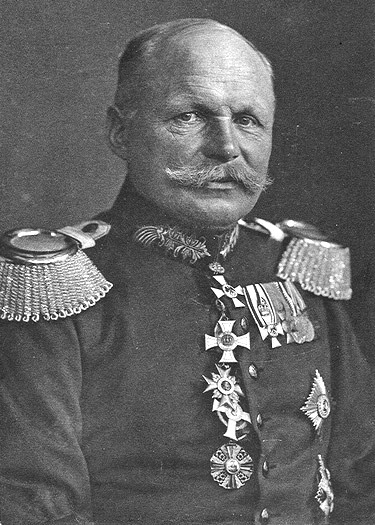 | Ewald von Lochow
(Born on 1 April 1855 in Petkus and died on 11 April 1942 in Berlin-Charlottenburg) was a Prussian officer and later General of Infantry during World War I. He was a recipient of Pour le Mérite with Oakleaves. |
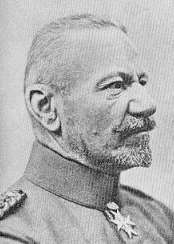 | Max von Gallwitz
Max Karl Wilhelm von Gallwitz (born 2 May 1852 - died 18 April 1937) was a German general from Breslau (Wroclaw), Silesia, who served with distinction during World War I on both the Eastern and Western Fronts. |
| Georg von der Marwitz
Johannes Georg von der Marwitz (born on 7 July 1856 in Stolp and died on 27 October 1929 in Wundichow) was a Prussian cavalry general, who commanded several German armies during the First World War on both the Eastern and Western fronts. |
The French military leaders |
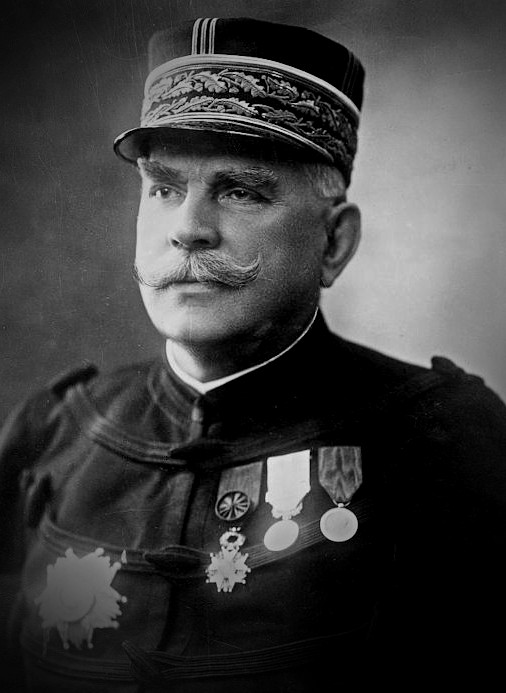 | Joseph Joffre
Marshal Joseph Jacques Césaire Joffre (Born on 12 January 1852 in Rivesaltes and died on 3 January 1931 in Paris), was a French general who served as Commander-in-Chief of French forces on the Western Front from the start of World War I until the end of 1916. He is best known for regrouping the retreating allied armies to defeat the Germans at the strategically decisive First Battle of the Marne in September 1914.
His political position waned after unsuccessful offensives in 1915, the German attack on Verdun in 1916, and the disappointing results of the Anglo-French offensive on the Somme in 1916. At the end of 1916 he was promoted to Marshal of France, the first such promotion under the Third Republic, and moved to an advisory role, from which he quickly resigned. Later in the war he led an important mission to the United States.
His popularity led to his nickname Papa Joffre. |
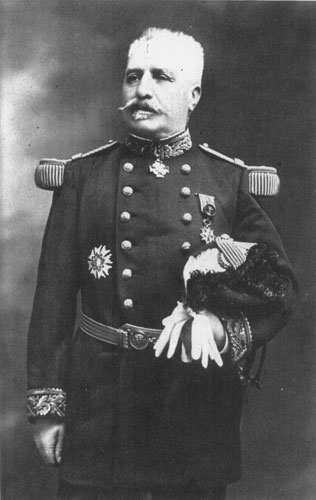 | Noël Édouard, Vicomte de Curières de Castelnau
Noël Édouard Marie Joseph, Vicomte de Curières de Castelnau (born on 24 December 1851 in Saint-Affrique and died on 19 March 1944 in Montastruc-la-Conseillère) was a French general in World War I. He represented the militant Catholic element in the French Army, and headed the Féderation Nationale Catholique. Despite his significant achievements during the war, he was never named Marshal of France. |
| Fernand de Langle de Cary
Fernand Louis Armand Marie de Langle de Cary (Born on 4 July 1849 in Lorient and died on 19 February 1927 in Pont-Scorff) was a French general during World War I. He commanded Fourth Army when the war began. |
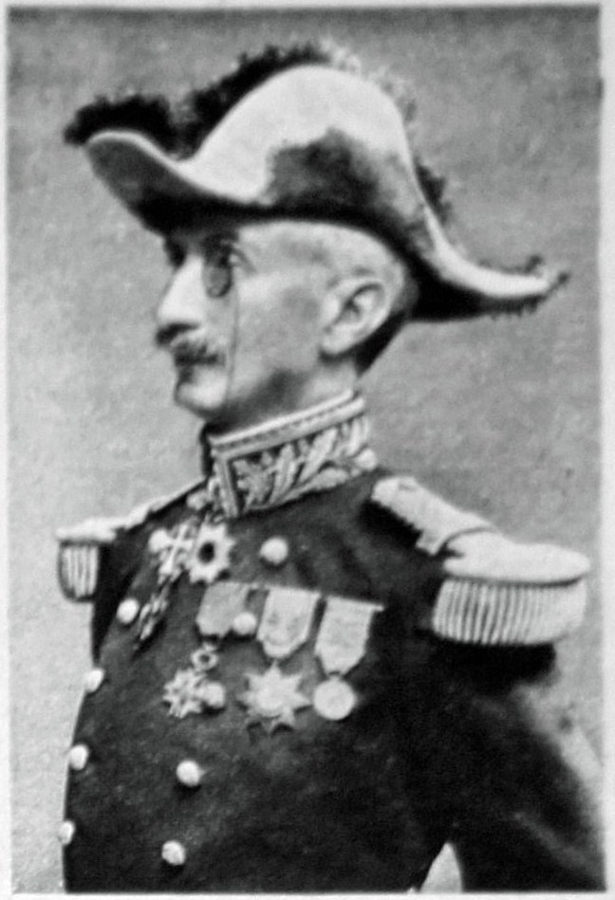 | Frédéric-Georges Herr
Frédéric-Georges Herr (Born on 7 May 1855 in Neuf-Brisach and died on 27 October 1932 in Paris) was a French general and the son of an Alsatian surgeon who chose to emigrate to France following the annexation of Alsace-Lorraine after the Franco-Prussian War. Herr entered the École polytechnique in 1874 and married Anne Peugeot, the heiress of the Peugeot family, in 1883. From 1895 to 1902, he took an active part in the colonization of Madagascar under the order of General Gallieni. Promoted General of Division in 1914, he distinguished himself at the battle of Les Éparges (1915) and played an important role in the battle of Verdun (1916). |
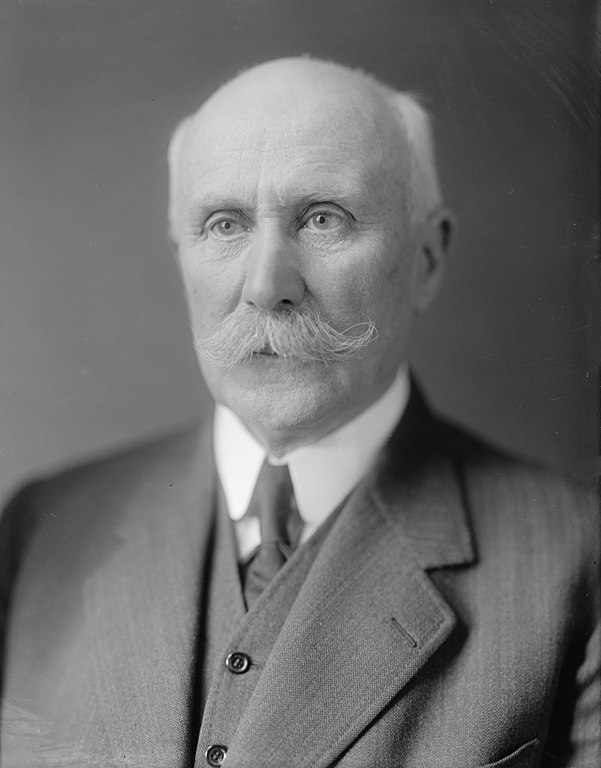 | Philippe Pétain
Henri Philippe Benoni Omer Joseph Pétain (Born on 24 April 1856 in Cauchy-a–la-Tour and died in the Fort de Pierre-Levée citadel prison on 23 July 1951), generally known as Philippe Pétain or Marshal Pétain (Maréchal Pétain), was a French general officer who attained the position of Marshal of France and subsequently served as the Chief of State of Vichy France from 1940 to 1944. Pétain, who was 84 years old in 1940, ranks as France's oldest head of state. Today, he is considered a Nazi collaborator, the French equivalent of his contemporary Vidkun Quisling in Norway. He was sometimes nicknamed The Lion of Verdun.
During World War II, with the imminent fall of France in June 1940, Pétain was appointed Prime Minister of France by President Lebrun at Bordeaux, and the Cabinet resolved to make peace with Germany. The entire government subsequently moved briefly to Clermont-Ferrand, then to the spa town of Vichy in central France. His government voted to transform the discredited French Third Republic into the French State, an authoritarian regime aligned with Nazi Germany.
After the war, Pétain was tried and convicted for treason. He was originally sentenced to death, but because of his outstanding military leadership in World War I, particularly during the Battle of Verdun, Pétain was viewed as a national hero in France and was not executed. His sentence was commuted to life in prison and he died in 1951. |
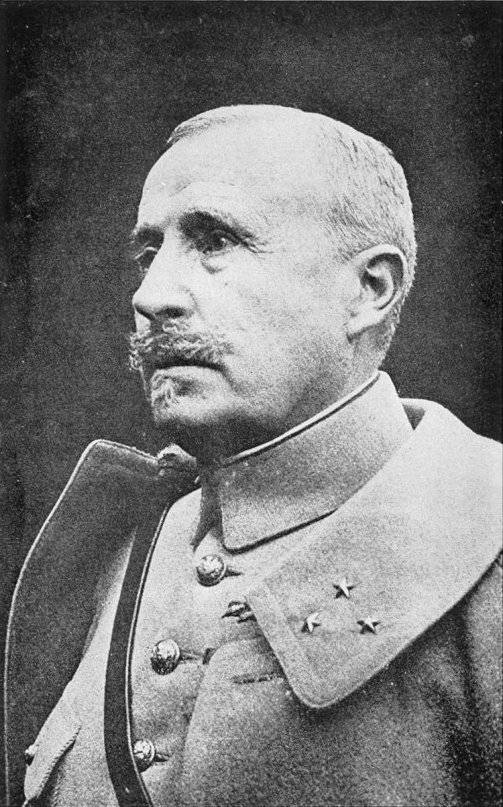 | Robert Nivelle
Robert Georges Nivelle (Born on 15 October 1856 in Tulle and died on 22 March 1924 in Paris) was a French artillery officer who served in the Boxer Rebellion, and the First World War. Nivelle was a very capable commander and organizer of field artillery at the regimental and divisional levels. In May 1916, he succeeded Philippe Pétain as commander of the French Second Army in the Battle of Verdun, leading counter-offensives that rolled back the German forces in late 1916. During these actions he and General Charles Mangin were already accused of wasting French lives.
Following the successes at Verdun, Nivelle was promoted to commander-in-chief of the French armies on the Western Front in December 1916, largely because of his persuasiveness with French and British political leaders, aided by his fluency in English. He was responsible for the Nivelle Offensive at the Chemin des Dames, which had aroused skepticism already in its planning stages. When the costly offensive failed to achieve a breakthrough on the Western Front, a major mutiny occurred, affecting roughly half the French Army, which conducted no further major offensive action for several months. Nivelle was replaced as commander-in-chief by Philippe Pétain in May 1917. |
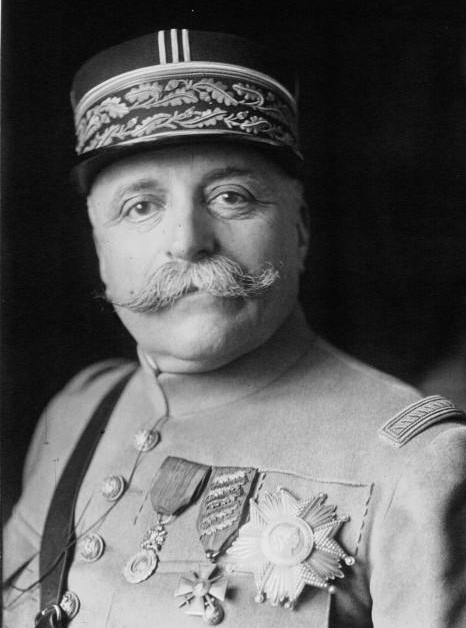 | Adolphe Guillaumat
Marie Louis Adolphe Guillaumat (Born on 04 January 1863 in Bourgneuf and died on 18 May 1940 in Nantes.) was a French Army general during World War I.
At the start of World War I, he was chief of Minister of War Adolphe Messimy's military cabinet. When the latter left office, Guillaumat was appointed as the head of the 33rd Infantry Division on August 30, 1914, and then of the 4th Infantry Division on December 9, 1914. He led the 1st Army Corps from February 25, 1915, and on December 15, 1916, he replaced Robert Nivelle as commander of the Second Army, when the latter was made commander-in-chief of the French Army.
Guillaumat was sent to replace General Sarrail as commander of the Allied Army of the Orient in Salonika in December, 1917. He laid the plans later executed by his replacement, General Franchet d'Esperey, and rebuilt the relations with France's allies somewhat damaged by his predecessor. Guillaumat was recalled to Paris on 17 June 1918 and replaced with Franchet d'Esperey.
There, he replaced Auguste Dubail as Military Governor of Paris. After the success of the Second Battle of the Marne, he was appointed to the Supreme War Council. He then returned to active command as commander of the Fifth Army, which he led through the Ardennes at the end of the war. |
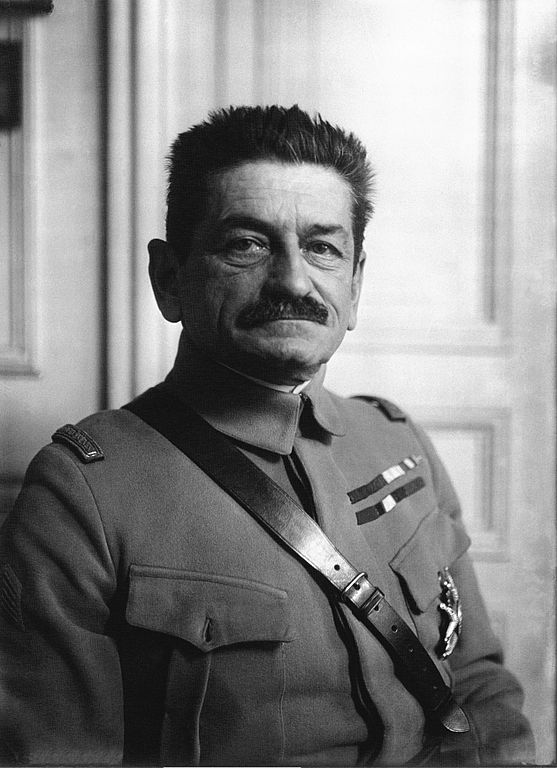 | Charles Mangin
Charles Emmanuel Marie Mangin (Born on 6 July 1866 in Sarrebourg and died on 12 May 1925 in Paris) was a French general during World War I.
During the First World War Mangin rose from divisional command to that of the Tenth Army for the Second Battle of the Marne, commanding both French and American troops. Nicknamed "the Butcher" for his espousal of la guerre à outrance (all-out war) and his faith in the suitability of North African Tirailleur for the attack, there was no doubt in the French Army that Mangin was fearless. During that war, Mangin had notable victories at the Battle of Charleroi in 1914 and then at the Battle of Verdun in 1916 but his reputation suffered following the disastrous Nivelle Offensive (16 April - 9 May 1917). This was due partly to the fact that Mangin was one of the few high-ranking French officials who supported Nivelle's strategy.
Mangin's Sixth Army bore the brunt of the main attack during the Second Battle of the Aisne, the main component of Robert Nivelle's costly assault. After the failed operation was abandoned, Mangin and Nivelle were sacked. After Ferdinand Foch was promoted to Allied Supreme Commander (over Philippe Pétain), Mangin was recalled upon the orders of Prime Minister Clemenceau and given command initially of a corps and then of the French Tenth Army on the Western Front.
Although Mangin was loved by his troops but not by the politication (who gave him the nickname "The Butcher"), his Tenth Army was responsible for the crucial Allied counter-attack at the Second Battle of the Marne. It was this that largely promoted his military reputation. He also became known for the observation: "Quoi qu'on fasse, on perd beaucoup de monde" ("Whatever you do, you lose a lot of men"). In the closing months of the war, he served as part of General Castelnau's Army Group East, advancing towards Metz.
The mass recruitment of African troops in the French Army, was the result chiefly of Mangin's persistent advocacy of the idea, which had many opponents. His conception of a "plus grande France," based on political autonomy and military obligation for all parts of the French Empire, is put forward in the concluding chapters of his book Comment finit la Guerre. |
The soldiers
 | Kanonier Franz Schwarzkopf
Born on 14 September 1893, fallen during the battle of Verdun on 01 July 1916.
Franz Schwarzkopf was the only son of the railway employee August Friedrich Schwarzkopf (House No. 56 in Buro) and Dorothee Sophie Henriette Hennig from Zieko. He wanted to become a farmer after the war.
Buro is a quarter of Coswig, Saxony-Anhalt today. Zieko is a small village a few miles away from Coswig. |
Copyrights:
 |
Erich von Falkenhayn |
The author died in 1924, so this work is in the public domain in its country of origin and other countries and areas where the copyright term is the author's life plus 80 years or less. |
See Wikimedia |
 |
Crown Prince Wilhelm |
This image is in the public domain in the United States because it was first published outside the United States prior to January 1, 1923. |
See Wikimedia |
 |
Konstantin Schmidt
von Knobelsdorf |
This work is in the public domain in its country of origin and other countries and areas where the copyright term is the author's life plus 70 years or less. |
See Wikimedia |
 |
Ewald von Lochow |
This image is in the public domain in the United States because it was first published outside the United States prior to January 1, 1923. |
See Wikimedia |
 |
Max von Gallwitz |
This media file is in the public domain in the United States. This applies to U.S. works where the copyright has expired, often because its first publication occurred prior to January 1, 1923. |
See Wikimedia |
 |
Joseph Joffre |
This work is in the public domain in its country of origin and other countries and areas where the copyright term is the author's life plus 70 years or less. |
See Wikimedia |
 |
Édouard de Castelnau |
This image comes from the Project Gutenberg archives. This is an image that has come from a book or document for which the American copyright has expired and this image is in the public domain in the United States and possibly other countries. |
See Wikimedia |
 |
Frédéric-Georges Herr |
This work is in the public domain in its country of origin and other countries and areas where the copyright term is the author's life plus 70 years or less. |
See Wikimedia |
 |
Philippe Pétain |
This work is from the Harris & Ewing collection at the Library of Congress. According to the library, there are no known copyright restrictions on the use of this work. |
See Wikimedia |
 |
Robert Nivelle |
This media file is in the public domain in the United States. This applies to U.S. works where the copyright has expired, often because its first publication occurred prior to January 1, 1923. |
See Wikimedia |
 |
Adolphe
Guillaumat |
The copyright of this image has expired in the European Union because it was published more than 70 years ago without a public claim of authorship (anonymous or pseudonymous), and no subsequent claim of authorship was made in the 70 years following its first publication. |
See Wikimedia |
| © |
Franz
Schwarzkopf |
This picture was taken from the web-site "Buro online".
Permission for the use of the picture was provided by the owner. |
See Buro online |
|





